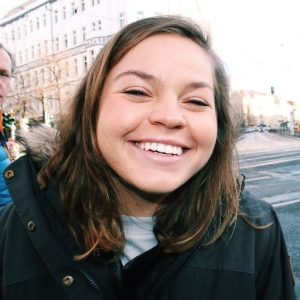February 5, 2018 | 4:30 PM – 5:30 PM | Visual Arts Center, Beam Classroom
Ashley Ferro-Murray will discuss how certain trends in the history of the relationship between “technology” and “dance” impact her work as a curator of dance and theater at the Experimental Media and Performing Arts Center (EMPAC), a multi-venue arts center at Rensselaer Polytechnic Institute in Troy, New York. From this historical perspective, Ferro-Murray will discuss a range of current curatorial projects including her work with Trajal Harrel, Maria Hassabi, Ali Moini, Okwui Okpokwasili, and Andrew Schneider. She will reflect on what she sees as the current and evolving state of incorporating digital culture into cross-disciplinary performance, including film and installation works, through the lens of her curatorial work with these and other artists.
Ferro-Murray is associate curator of theater/dance at EMPAC. She holds a PhD in performance studies with emphasis in new media from the University of California, Berkeley. Current commissions and coproductions include works by Mary Armentrout, Mallory Catlett, Elena Demyanenko and Erika Mijlin, Trajal Harrell, Maria Hassabi, Ali Moini, Andrew Schneider and Alice Sheppard.
She is also currently working on a book project titled Choreography and the Digital Era: Dancing the Cultural Differences of Technology. Based in part on her doctoral research and informed by her current curatorial practice, Choreography in the Digital Era explores the importance of movement in the construction of bodies and identity in the digital age. She has published in Media-N Journal, The Drama Review, and Dance Research Journal. Recent articles include ‘Transborder Immigrant Tool’, ‘Choreographic Resistance in the US-Mexican Borderlands and Technologies of Performance’, and ‘Machinic Staging and Corporeal Choreographies’. Ferro-Murray has given talks at University of California, Irvine, The University of Pennsylvania, Bryn Mawr College, Cornell University, and Bowdoin. She was previously the Andrew W. Mellon Creative Time Global Fellow and the recipient of the MacArthur Foundation Digital Media and Learning Grant. This summer Ferro-Murray will be on faculty of the NEH Institute for Digital Technologies in Theatre & Performance Studies at the University of Georgia.
Lecture sponsored by Digital and Computational Studies (DCS).

